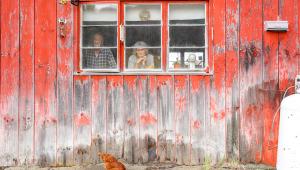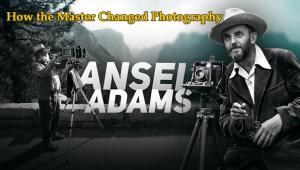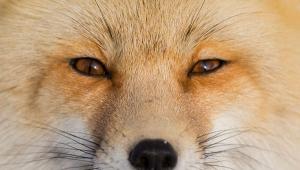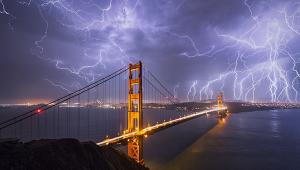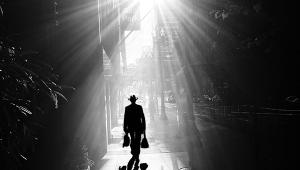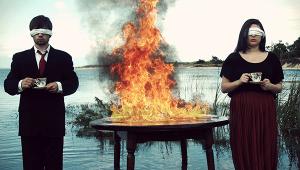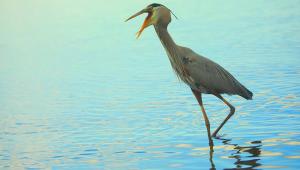Travel & The Photographer’s Eye: The Photography Of Yiming Hu

All Photos © Yiming Hu
When Yiming Hu was a freshman in college he rented a camera and fell in love with photography. After he moved from China to the United States he was drawn to landscape and travel photography and learned advanced photo techniques from books, magazines, the Internet, and lots of experience. Today he works as a computer engineering professor at the University of Cincinnati doing research, and as a second career he shoots landscapes and travel subjects in many locations to satisfy his photo appetite. I spoke with him recently about his work.
Shutterbug: Tell me about how you prepare for your photo travels.
Yiming Hu: I use road maps, books, and the Internet to find scenic areas that interest me in America and abroad. Landscapes offer me a variety of terrains, such as mountains, rolling hills, cityscapes, and farmlands. Some aspects I find may be somewhat repetitive, but I take the time to shoot from diverse viewpoints, in new and familiar locations.


SB: On your website (www.majestic-nature.com) you discuss a “travel photography philosophy.”
YH: My philosophy of travel photography is different from that of my landscape photography. The latter is more about poetic expression toward natural beauty and less about disclosing the real world. I also include storytelling, which I feel presents an artist’s vision of the geography and its people. My own pictorial angles express realities, and I believe the best images speak for themselves when I show cultures and lifestyles, including buildings and natural features.
SB: What parts of your education influenced your photography?
YH: With no formal artistic training, I learned to choose subjects and make compositions from instinct, with influence from other people’s images. I found that a good path to success is taking pictures from numerous viewpoints.



SB: What else about landscapes helps describe your approach?
YH: While photographing landscapes my process is aided by my inner emotions toward forms that influence my compositions. When I find their most aesthetic aspects, I wait for the most dramatic lighting conditions. Many worthy locations are difficult to reach when they involve hours of hiking. Conditions too hot or too cool also face photographers who, if they are not discouraged, may make beautiful discoveries. Some landscape images you admire in books or exhibitions may have taken days of waiting for vivid light to make outstanding images. Patience can augment success.
SB: How do you achieve “storytelling” images?
YH: Typically, travel photography puts viewers in locations through a series of images that show what you have seen. Examples include including city skylines, merchants in the marketplace, and picturesque parks. Sometimes blurring movement in an exposure adds interest.


SB: How does lens selection influence your eye?
YH: Some scenes that are easy to reach may seem uninspiring to untrained eyes, yet experienced photographers make them dramatic by finding offbeat viewpoints and choosing the right lenses. Wide-angle and telephoto lenses can help distinguish your photos. Wide angles spread subjects, though you may have to deal with some distortion. Telephotos compact subjects and help make landscape compositions you didn’t realize were there. When using heavier lenses for landscapes and architecture, a tripod is essential. On the street I shoot hand held for flexibility and to attract less attention.
SB: What is one of your most memorable photo locations?
YH: In Venice, Italy, a very photogenic city, I arrived at St. Mark’s Square when it was flooded. To avoid crowds I set up on a tripod after sunset when the sky was deep blue, and I captured reflections of the basilica on the water. The square is flooded about 200 days a year.
SB: How do you capture the culture of a location?
YH: One way is to include people and their activities as symbols along with settings, rural or city. Another approach is to shoot a prominent historic spot within a modern setting. Stirring viewers’ memories is an important function of travel and landscape photography.

SB: What about editing and making selections, and how do you like to present your work?
YH: I carefully edit my pictures and make photo books. There are many companies making them now and if you keep only your best images, you will have a minimum of bored viewers. It is also useful to write descriptive information and observations with your photos to help you recall where, what, and when.
Many tourists enjoy travel photography in their snapshots. More advanced photographers understand that good research for subjects, roving eyes to spot scenes and unexpected opportunities, and especially patience while waiting for the best light all add up to success.
To see more of Yiming Hu’s work, visit his website at www.majestic-nature.com.



